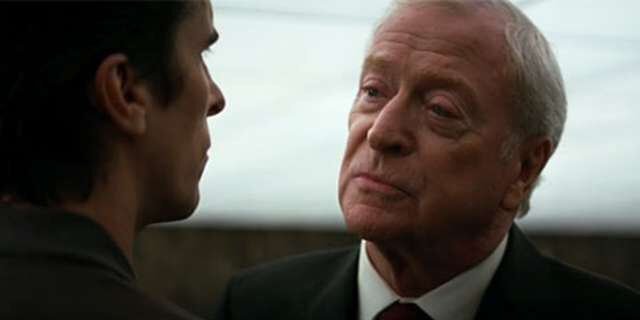What is the Pick-an-Eye Technique?
An unofficial name for a brilliant acting technique
(By Jim Webb)

(Photo: Sound On | Pexels)
RELATED TOPICS:
What is the Pick-an-Eye Technique?
Acting Technique: Building chemistry through compliments?
Acting Technique: Play Powerful with Subtlety
You probably already know who Michael Caine is from all his many roles in films like The Cider House Rules (1990), The Prestige (2006), Inception (2010) and The Dark Knight Trilogy. He’s one of the finest actors ever to come out of the UK.
But what you may not know is that Michael Caine is also one of the finest acting teachers, especially when it comes to on-camera acting techniques.
In 1990, Caine released Acting in Film: An Actor’s Take on Moviemaking. It is an absolute must-read for any actor looking to improve their performance on-camera.
Michael Caine: “Real people struggle NOT to show their feelings.”
One technique, taught by Caine, is particularly helpful. He never actually gave it an official name, so, for the benefit of this article, I will give it an unofficial name. Let’s call it the Pick-an-Eye Technique.
Pick an Eye

(Michael Caine in Dark Knight)
According to Caine, when you’re giving an on-camera performance and you’re speaking to another actor, in a close-up shot, it’s imperative that you not speak to the other actor the way you would in a normal conversation.
In a normal conversation with a person, you generally will stare at both their eyes, simultaneously. And at times, you might go back-and-forth, from one eye to the other. You might also look at other parts of their face, such as their mouth and teeth, during the course of the conversation.
But in a close-up scene, you do not want to do this. You, instead, want to focus only on one eye.
Not Just Any Eye
More specifically, you want to use your eye that is furthest away from the camera and focus it onto your scene partner’s eye that is nearest to camera.
If the camera is stationed to the left of your scene partner’s face, you should use your left eye to focus on his left eye.
For example, if the camera is stationed to the left of your scene partner’s face, you should use your left eye to focus on his left eye.
Stay Focused Only on That Eye
Critically, you never move from that eye throughout the scene. You never allow your eye to travel to the person’s other eye. You never allow your eye to move to a different part of the other actor’s face, the way you might in a normal conversation.
As Michael Caine says, “Don’t go from eye-to-eye.”
Why is the “Pick-an-Eye Technique” So Valuable?
The first reason to focus on only one eye, the eye of your scene partner that is closest to camera, is that it opens your face up to the camera. You are able to maintain eye contact with your scene partner while keeping your face as open to the camera as possible.
By contrast, if you turned your face to focus on your scene partner’s right eye, you would be turning your face slightly away from camera. And, in the process, the camera loses part of your face, along with some of your facial expressions.
You want to use your eye that is furthest away from the camera and focus it onto your scene partner’s eye that is nearest to camera
The second reason to focus on only one eye is, of course, intensity. The close-up loses intensity if your eyes are dancing around, all over the place, as you say important dialogue. Looking at different parts of your scene partner’s face might prompt the audience to question where exactly you’re looking, instead of concentrating on what you are saying. In the process, the intensity of the scene is diminished.
So, the next time you’re doing a close-up scene, apply this technique. Your performance is sure to come out much stronger and carry much more significance.
You Might Also Like:
What is the “Repetition Technique”?



